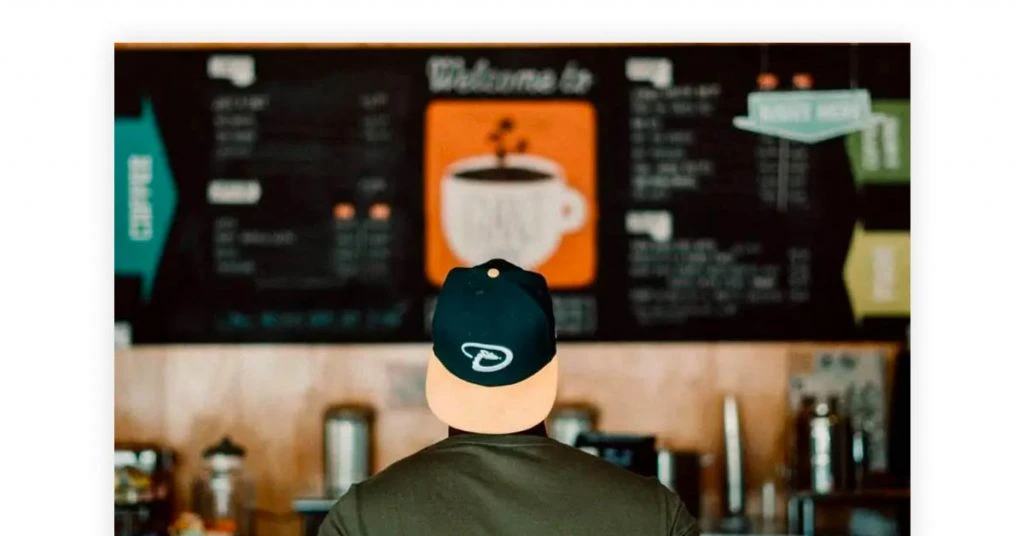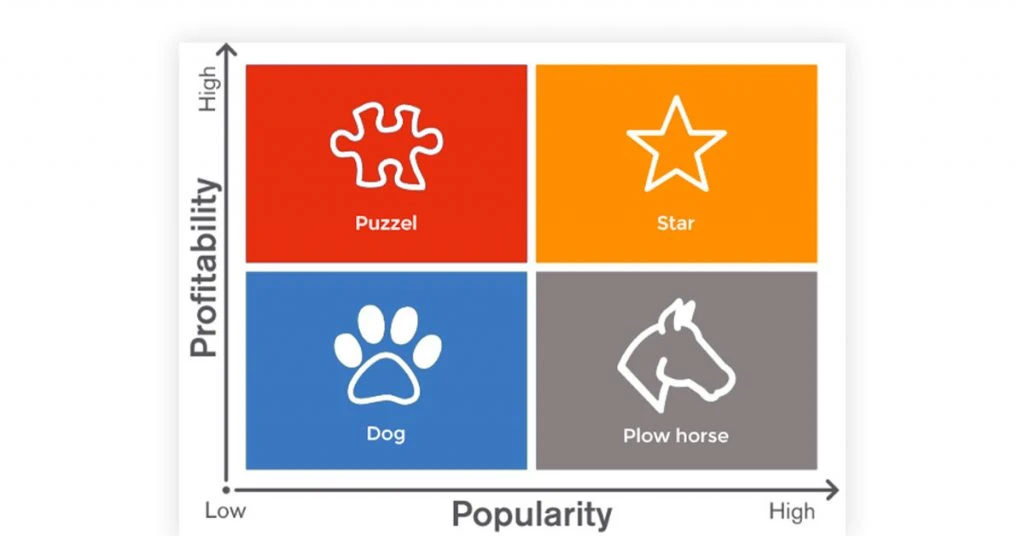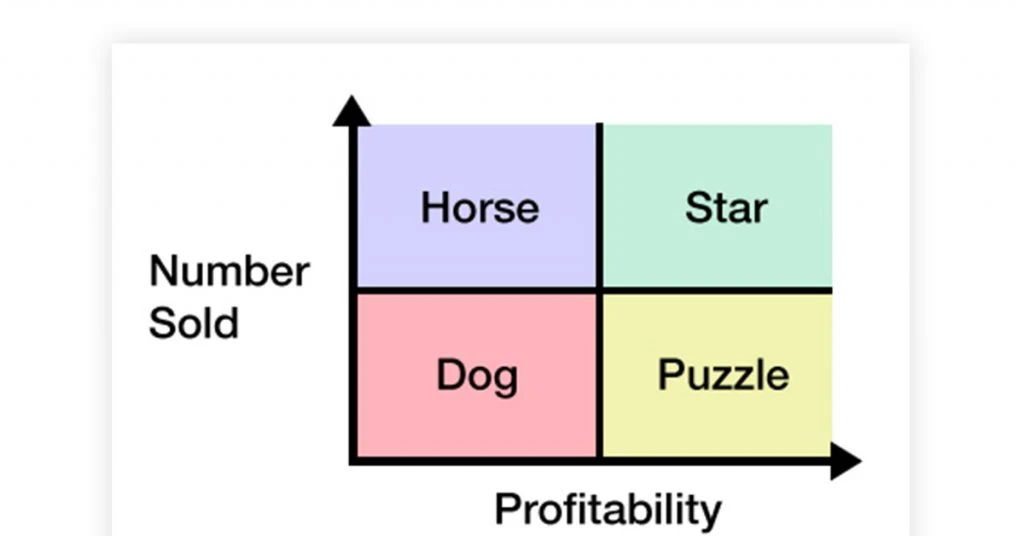How Can Menu Engineering Improve Your Restaurant Profit Margin by 25%

Your restaurant’s menu says a lot about your restaurant business!
It’s not just a menu but a potential marketing tool that can seriously impact your revenue. A lot goes into building a restaurant’s reputation- from a pleasant ambience, delicious menu, meticulous service, hygiene, and proficient staff to many more things.
But, what’s that one thing that will attract customers like a magnet? – The Food. How you present your food on the menu is important, as it provides value to their dining experience. Enter Menu Engineering!
Menu Engineering is using menu psychology and menu design to your best benefit. But you need to understand menu engineering in-depth to reap Profit with it.
This article informs you on how menu engineering can improve your restaurant’s profit margin.
What is Menu Engineering?
Menu Engineering definition can be understand as studying how a food item’s profitability and popularity stand against each other and using this data strategically to place items on a restaurant’s menu. It’s not just about how your menu looks, but how you use psychology to price, place and systematically organize items on a menu. If done right, menu engineering can effectively increase your profitability per guest.
Menu Engineering isn’t a random concept; instead, it brings data analysis and calculative decision-making into the picture. It is also a powerful marketing tool that you can leverage to maximize Revenue. This is facilitated by smartly advertising your most profitable menu items to instigate customers to buy them. To enac1t this, menu engineering comprises two main factors:
- Item demand
- Item margin contribution
Menu engineering is to be executed by a team- and not an individual. Commonly, the Head Chef, General Manager of the restaurant, Chief Operating Officer, and Head Server are people on board who execute food menu engineering. These people better know about customers’ favourites, popular items, ingredient costs, and fluctuating customer preferences.
Suggested Read: Best Restaurant Management Software in India for Small Business
How Menu Engineering Helps?

With menu engineering, you will understand whether your items are high or low priced and whether you need to improvise your recipe ingredients or portion sizes. Moreover, it also helps you monitor the performance of each menu item.
The automated menu engineering process visualizes the popularity vs profitability of menu items to help you understand each item’s sales performance and margin contribution. You can use this data for advertising menu items smartly, say those low in sales but offer a high margin.
KPIs, costing, and overheads provide deeper insights into profitability and help understand how you can tweak prices, where to place items on a menu, and items you need to advertise more to increase ROI of your restaurant business. This will also help you determine whether you need to add new items or discard some of the items from the menu.
How Menu Engineering impacts menu performance?
- Discarding items that contribute less to the margin and have poor performance, thereby improving your food costs
- Smartly advertising your profitable items
- Automating process for regular menu analysis for its optimization to help boost sales
Why is Menu Engineering Important?

Is Menu Engineering critical? Why do you need to implement it? Does it affect your profit margin?
The straightforward answer to this is- If you want to increase your profits, Menu Engineering is your best tool!
Menu Engineering is crucial for restaurants because it provides invaluable insights into your high-performing and poor-performing items and sales success. It is a hands-on experience which demands expertise in various metrics such as profit margins, menu prices, ingredients costs, purchasing costs, food costs, etc. With this knowledge, you can determine which items contribute to your sales and which do not.
Well-planned menu engineering doesn’t stop at just an increase in profits. Instead, it can keep on driving additional profits, regardless of the size or type of restaurant. The key to success in menu engineering is the willingness of the team to invest their time and efforts to learn menu engineering and bring about the necessary changes.
Whether big, small, start-up or high-end, restaurant menu engineering is crucial for all types of restaurants seeking to boost their profits.
Suggested Read: Free Restaurant Billing Software for Cafes and Hotels
What is the Menu Engineering Matrix?

Menu Engineering Matrix is nothing but a process of categorization where you will classify food items and place them into one of the four categories, which are:
- Stars
- Puzzles
- Plowhorses
- Dogs
Matrix is a scatter graph where the X-axis represents a menu item’s profitability (its profit margin), and Y-axis represents the menu item’s popularity (number of items sold per specific timeframe)
Menu Popularity Vs Menu Profitability: How to Create a Balance?
Now that you’ve understood the basics of menu engineering, let us dive deeper into the technicality behind the concept.
To strike a balance between menu popularity and profitability, you need to map your menu items on a menu engineering matrix and visualize them to derive critical metrics.
First things first. Determine an item’s cost and pricing, and then evaluate its profitability based on the profit margin.
The contribution margin of an item = Menu Price – Menu Cost
You can use restaurant management software to calculate the contribution margin of your food items easily. Menu engineering will then provide ways to increase the average contribution margin of your customer’s every order.
To measure the item’s popularity, simply plot it on the menu engineering matrix. Some restaurants may have advanced management software that automatically generates a menu engineering matrix. But if you do not have it, you can manually create the matrix by plotting menu items on the X and Y-axis of the menu engineering matrix.
With this chart, you will be able to visualize the profitability vs. popularity of the menu items and classify them into four categories, viz. Stars, Puzzles, Plowhorses and Dogs.
Major Categories of Menu Engineering

- Stars: High Profitability and High Popularity
Stars are your best-seller items. These top-class menu items have a high-profit margin and are also popular amongst customers. These items must be a “constant” for your restaurant and must be promoted frequently.
- Puzzles: High Profitability and Low Popularity
Puzzles are your hidden gems. These food items on your menu with a high-profit margin, but they do not sell very well. Your main objective here should be to find diverse ways to sell these items.
First, step is to find out why these items are difficult to sell- Is it high priced? Is it not advertised on the marketing channels as it should be? Is it not highlighted well in the menu? Is the item’s description lacking? Scrutinize your “Puzzles” and create innovative marketing strategies for them at your sales channels to drive sales.
- Plowhorses: Low Profitability and High Popularity
Plowhorses are food items on your menu that have a low-profit margin, meaning their ingredients cost you more but are popular amongst your customers. Now, you need to find means to make these items more profitable. You can tweak the recipe ingredients or rework portion sizes to increase its profit margin. Also, you can pair it up with good beverages to increase its profit margin.
- Dogs: Low Profitability and Low Popularity
Dogs are food items that cost you more and are not popular amongst your patrons. You can eliminate them, re-brand them or re-create them as per your liking.
Suggested Read: How to Make Restaurant Business Successful?
What’s Involved in the Menu Engineering Process?
Menu Engineering Process can be broken into nine main steps:
Select Optimal Time for Menu Engineering
The main objective of menu engineering analysis is to rework, re-brand or re-create your menu to advertise your profitable items better and discard or de-emphasize non-profitable ones.
The entire menu engineering process takes time, and if done right, it truly pays off with time. If you execute menu engineering quarterly, that would be great! However, it is fair if you prefer to do a menu engineering analysis every year or twice per year.
Calculate Menu Costs
Evaluating Menu Cost is a critical step to acquiring the metrics and data you would need to determine the profitability of each item.
Example, Suppose the item is corn soup; the ingredients you would require here are sweet corn, butter, salt, celery, cornflour, scallions, pepper and so on.
It would be best to calculate the food cost of each ingredient used in the item, as this will impact your further calculations.
Menu Cost or Food Cost = Cost of ingredients used + Other Purchase Cost
Cost of ingredients also includes the price of cooking oil, garnishes, spices, seasonings, sauces, etc.
Purchase Cost must include costs related to purchasing food and inventory, such as delivery fees, return charges, and other expenses. It DOES NOT include labor costs
Most restaurants overlook the need to calculate the food cost of each menu item as it is time-consuming. However, this process is exactly what drives your marketing strategies, analysis and intelligent menu engineering, leading to sales success altogether.
Calculate Food Cost in Percentage
To calculate the food cost in %, you must precisely know the amount spent on all ingredients used in your food items and calculate the cost of every item on your menu as shown in Step 2.
After evaluating the food cost of each item, you divide the Menu Cost by the Item Pricing on the menu and multiply by 100.
Food Cost in % = Food cost / Item pricing * 100
Calculate Every Item’s Contribution to Increasing Revenue
With this evaluation, you will determine which are your highest grossing menu items. To calculate this, you first need to calculate the profit margin of each item.
Profit Margin = Price of the Item on menu – Final food cost
As you calculate the profit margin, you will now be able to measure the benefits each item brings to your Revenue and analyze how they impact your sales success.
Note: Food Cost in Percentage and Profit Margin are two critical factors that help you in informed decision-making.
Measure Items’ Popularity
The popularity of a food item is measured by the total number of sales of that item for a specific timeframe. This evaluation can be easily found in your sales reports.
Next step is to calculate the percentage each item contributes to the overall popularity of the restaurant’s menu. For this percentage calculation, you need to gather the sales information for every item on your menu. In the sales report, you can determine how many people have ordered various menu items over a period of a quarter.
Popularity of a specific item signifies whether it reaps any benefit for your business or not.
Generate “Average” to Measure Sales Success
Once you collect all the data in place, it’s time to measure progress by calculating the Average Profit Margin.
Average Profit Margin = Total sum of all profit margins / total of the items
Average Sold = Total sum of the items sold / total of the items
Plot Profit Margin on the Menu Engineering Matrix
Finally, once you have calculated the profit margin, you need to plot it on the Y-axis of the menu engineering matrix chart, while the X-axis represents the number of sales.
- Firstly, split your entire menu into categories such as beverages, starters, desserts, appetizers, etc. Make sure that menu items do not overlap in multiple categories. The next step is to break down these categories into sections, say the starter category has sections such as: Vegetarian starter, Seafood starter, Meat starter, etc. You can use a spreadsheet to display the type and sections each food item comes under.
- The second step is to plot each menu item in one of the four quadrants mentioned above viz. Stars (Upper-right), Puzzles (Lower-right), Plowhorses (Upper-left) and Dogs (Lower-left).

- Lastly, the placement of each menu item on this chart with their profitability and popularity levels will help you determine their contribution to sales. Your best-selling, highest-grossing menu items will appear at the top, while those less popular and do not drive many sales will appear on the lower side of the graph.
With this data, you can further decide what to do with these items. Analyze a food item’s category level first and then their section level. Analyzing the data at their section level will help you strategically place menu items and promote them in their respective sections.
For example, if Chicken items fall under Stars, you must advertise Meat Starter sections the most in your menu.
All of these steps will complete your menu-engineering process, and now you can proceed with the menu design.
Menu Design
Designing your restaurant’s menu involves emphasizing your Stars and Puzzles. However, it is not as straightforward as it sounds. Menu design considers various factors, such as your customers’ favorites, preferred items, etc.
Make sure your menu’s design aligns with your restaurant’s vibe and type. You don’t want your menu to look too cluttered, loud with graphics, or mundane with no description of the food items. In short, make sure you strike a good balance between descriptive, neat-looking, and elegant.
Test your Menu Design
Test your newly created menu designs to see whether they drive profits for your business or not.
You can also take feedback from your trusted guests and learn about their preferences, ambience, entire dining experience, readability of the menu and much more.
Suggested Read: Questions to Ask Before Buying POS Machine for Restaurant
Smart Tips for Menu Engineering to Increase Restaurant Profit Margin
Taking Actions with Menu Engineering Matrix
Once you plot all the categorical and sectional items over the menu engineering matrix, the next question is- what to do with this data? To put these insights to good use, you must take the necessary actions to promote your profitable items to boost sales.
Here are some important tips on how to drive success with all the data you have gathered:
- Stars: These are your best-sellers. Highlight them and keep them consistent.
- Plowhorses: You may want to rework or re-create a profitable version of your Plowhorses to increase profitability. Commonly, salad and soups are found under your Plowhorses. Emphasize them by re-branding them into a profitable Three Salad Plate.
- Puzzles: Find out the problem with the item’s popularity and put efforts into promoting your Puzzles better. Is it high priced? Is it not promoted well? Do customers like its taste?
- Dogs: You may eliminate Dogs from your menu. Or, you may still keep them in your menu but de-emphasize their presence by listing them plainly on the menu.
Emphasize your Stars and Puzzles by Using Visual Clues
Emphasize the items you want to sell the most by highlighting them using various graphics such as photos, and drawings, putting a box around it, or simply using words such as “Chef’s special” next to it.
- Choose a menu cover that provides ample space to highlight your popular items.
- Do not use too many graphics or highlighting elements for the profitable items, so much that you de-emphasize other items at the bottom or make the panel look cluttered. The best practice is to highlight 1 or 2 items per category.
- One photograph on one page is known to increase sales of an item by up to 30%. However, pictures may seem a bit off-putting for high-end diners, so avoid this technique in this case.
- At the end of each item’s description on the menu, leave just two spaces and mention the price proximately, instead of listing them in a separate column on the right side. Use the same font style and font size for the pricing and description. This way, your customers will focus more on the food item, less on its price.
- Describe menu items with a bit of creativity instead of just listing the ingredients used. If you use spices, sauces or ingredients by a popular, leading brand- mention them in the description to advertise the item’s quality.
Strategic Listing Is the Key
Listing is important. The first few items on the list are the most viewed and considered necessary. Equally, the last item in the list gets the attention. The items little above the bottom are mostly ignored.
Make sure the food menu list is short. The best practice is to put simply five or maximum of seven items into every section. This design is easy to navigate and promotes attention to each food item. With such a design, customers are likely to order highly profitable items and higher add-ons.
Optimize Menu Cover Configuration
Menu cover configurations differ at various restaurants. Some may have a single panel, others may have two panels.
- Single panel menus help customers make faster decisions, but they don’t get too many options so they end up ordering less. This reduces profitability per guest and provides a poor dining experience to customers.
- Two-panel menu is the best configuration as it is easy to navigate, and offers a full dining experience to guests.
- The three-panel menu is also equally beneficial as you can list different items with ample space for highlighting profitable items.
- Multiple panels reduce the control you have over the items. Menus with many items listed on various panels make it hard for customers to read and choose.
Eye-Movement Pattern of Guests
As per the menu cover’s configuration chosen, customers tend to focus on specific menu areas. You can use the information below to place your profitable items on the areas that get the most attention from guests.
| Menu configuration | Areas with the Most Attention | Areas with Least Attention |
| 1-panel | Topmost area of the page | Just above the bottom of page |
| 2-panel | Topmost area of the right panel | Just above the bottom of left panel |
| 3-panel | Topmost area of the third panel | Just above the bottom of first panel |
| Multi-panel | Topmost area of every panel | Just above the bottom of each panel |
If the menu items you want to advertise are high priced, it is better to keep them away from the areas with the most attention, as it may make an impression that your eatery is costly.
In a Nutshell:
Menu engineering and informed decision-making can take your profit margin to the next level. When executed correctly, menu engineering helps identify your high grossing menu items and poor performing items. This will help you intelligently market your most profitable items on the menu. You can do this process quarterly, once a year or twice a year- whichever feels ideal to your team.
FAQs about Menu Engineering:
What is Menu Psychology?
Menu Psychology is the science behind designing a restaurant's menu, such as strategic display of items and their prices, descriptions and graphics used for items, and highlighting elements used for the most profitable items on the menu.
What is the Menu Engineering Format?
Menu Engineering Format or what they call “Menu Engineering Matrix” is the strategic analysis of the food items on a scatter chart to know their growth share. This helps businesses decide which items to highlight or eliminate from the menu.
How to make Menu Engineering for Restaurants?
To summarize, making menu engineering for restaurants involves four main steps:
1. Cost a menu;
2. Categorize menu items as per their profitability and popularity levels;
3. Design New Menu, and
4. Test New Menu Design.
Related Categories: Hotel Management Software | Banquet Management System | Event Management Software | Hospitality Management Software
Kalpana’s tech writing journey began in 2017 with Techjockey, and she truly belongs here! If she was not a technical content writer, she would have been a coder. Technical writing, especially for business software, is her passion, and she enjoys every bit of it. From addressing the pain... Read more




























